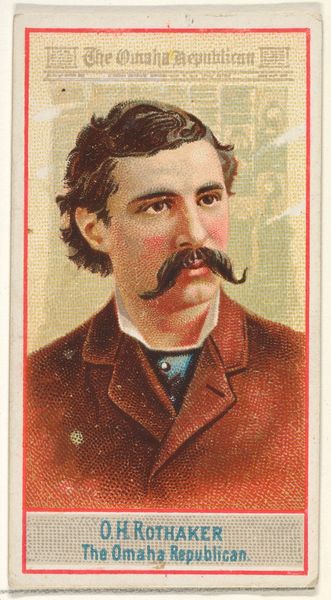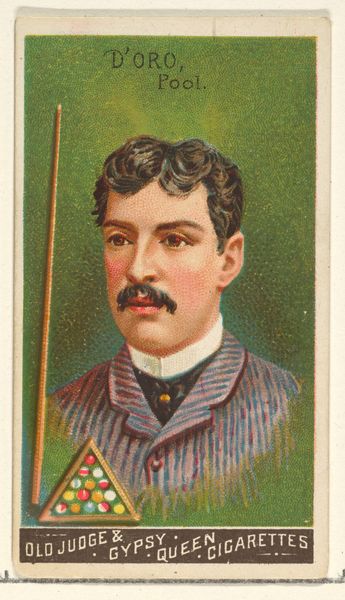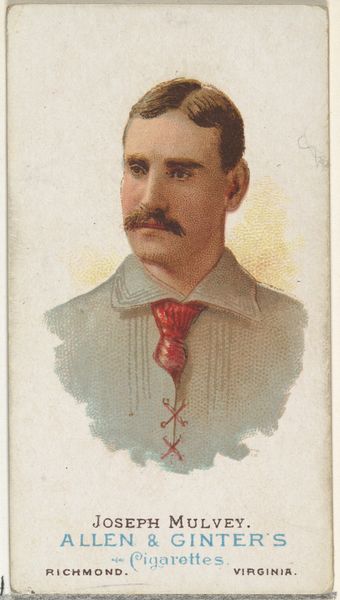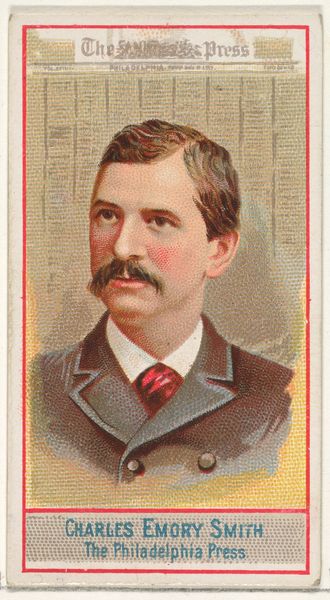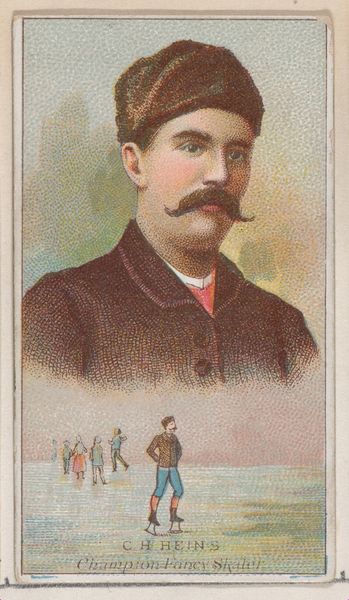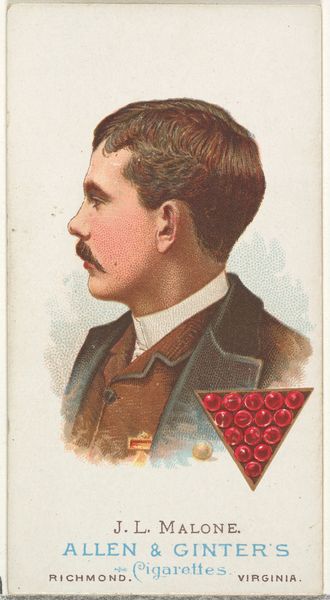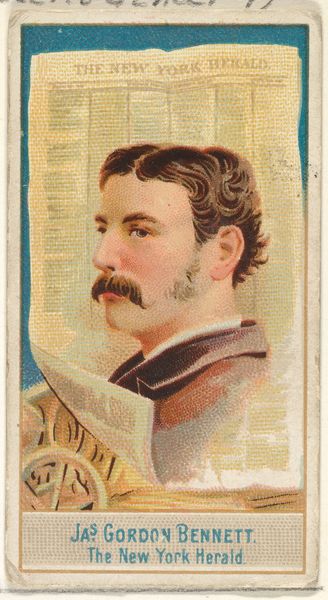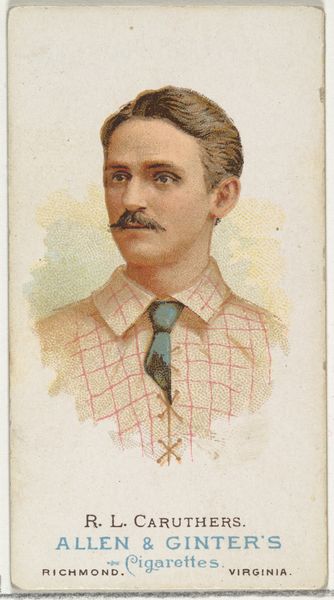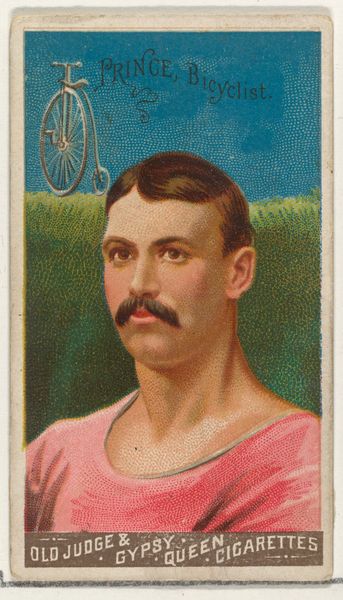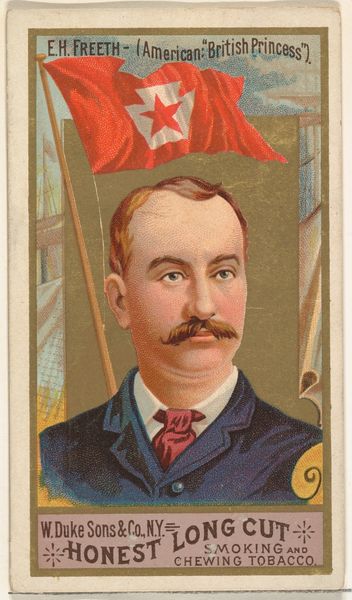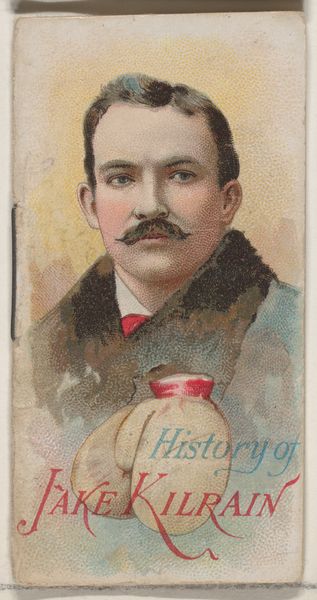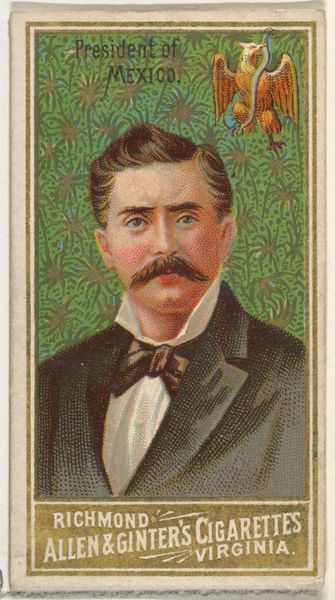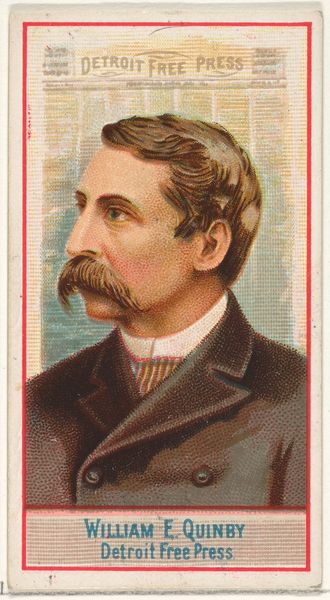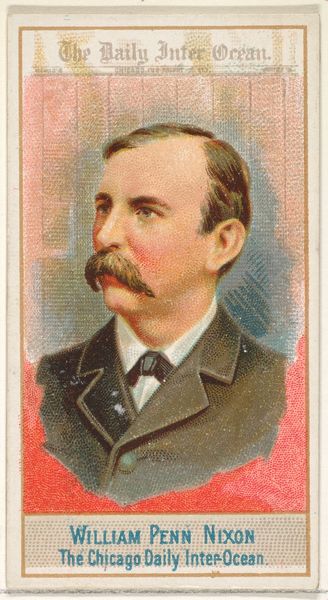
M. L. Barillas, President of Guatemala, from the Rulers, Flags, and Coats of Arms series (N126-1) issued by W. Duke, Sons & Co. 1888
0:00
0:00
drawing, print
#
portrait
#
drawing
# print
#
19th century
#
men
#
watercolour illustration
Dimensions: Sheet: 2 1/2 × 4 5/16 in. (6.4 × 11 cm)
Copyright: Public Domain
Curator: What a striking juxtaposition of imagery and text. My initial impression is of something quaint, yet with hidden complexities in the graphical layering. Editor: This image, dating back to 1888, is from a series of cards issued by W. Duke, Sons & Co. It’s titled "M. L. Barillas, President of Guatemala, from the Rulers, Flags, and Coats of Arms series". These prints, distributed with tobacco products, captured the likeness of global leaders, symbols, and national identities of that period. Curator: Tobacco cards! How fascinating that high-ranking political figures shared space with the promotion of "Honest Long Cut". The coat of arms, flag, and Barillas's portrait create an odd trinity. What could it signify, associating nationhood, leadership, and…smoking tobacco? Editor: Precisely. Look closer at that coat of arms—the quetzal bird, a symbol of liberty, perched above crossed rifles. It conveys Guatemala’s aspiration for independence achieved in 1821. Yet this quest is literally framed with instruments of violence and control. Is it a comment on the tools needed to secure such liberation? Curator: Or even a premonition. This symbol hints that power—liberation even—often emerges through conflict and suppression, particularly considering the figures from the coffee plantation appearing next to the flag and pennant of Guatemala. The contrast between idealized symbols and gritty reality of exploitation in Guatemala's labor creates an immediate tension in an otherwise commercial package. Editor: And observe Barillas's almost detached gaze. He seems like an aloof observer of the very symbolism and production of Guatemala contained within the composition, caught up, as it were, in the political and economic conditions on display. Curator: And one might not ignore that label of "honest long cut," which is now fraught. Is that honesty simply related to marketing, or a cynical reminder that power’s "honest cuts" frequently undermine the people they are supposed to defend? Editor: It’s intriguing how seemingly innocuous images can conceal deep ideological currents. This blend of power, industry, and national symbolism leaves a decidedly mixed aftertaste. Curator: Indeed. Even a little piece of printed ephemera opens up vistas of historical complexity.
Comments
No comments
Be the first to comment and join the conversation on the ultimate creative platform.
